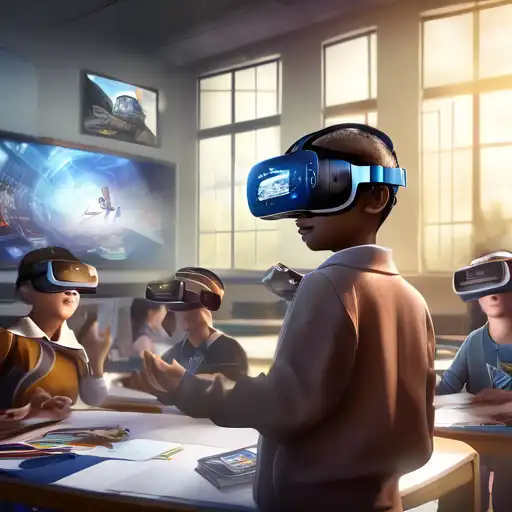Introduction to Virtual Reality in Education
Virtual Reality (VR) is revolutionizing the educational landscape, offering immersive learning experiences that were once unimaginable. This technology transports students to virtual worlds, making learning more engaging, interactive, and effective. From virtual field trips to complex scientific simulations, VR is opening new doors for educators and learners alike.
The Benefits of VR in Education
VR in education comes with a plethora of benefits. It enhances engagement by providing students with hands-on experiences in a controlled environment. Here are some key advantages:
- Enhanced Engagement: VR captures students' attention like never before, making learning fun and interactive.
- Improved Retention: Immersive experiences help in better retention of information.
- Accessible Learning: Students can explore inaccessible locations, from ancient ruins to outer space, without leaving the classroom.
- Safe Environment: VR allows for safe experimentation in subjects like chemistry and physics, where real-life experiments could be hazardous.
Implementing VR in the Classroom
Integrating VR into educational settings requires careful planning and consideration. Schools and institutions need to invest in the right hardware and software, ensuring compatibility with their curriculum. Training for educators is also crucial to maximize the potential of VR in teaching.
Challenges and Considerations
Despite its benefits, VR in education faces several challenges. The cost of VR equipment can be prohibitive for some institutions. Additionally, there's a need for more educational content tailored to VR platforms. Ensuring equitable access to this technology is another concern that needs addressing.
The Future of VR in Education
The future of VR in education looks promising, with advancements in technology making it more accessible and affordable. As more educational content becomes available, VR has the potential to become a staple in classrooms worldwide, transforming the way we learn and teach.
For more insights on innovative learning technologies, check out our article on EdTech Trends Shaping the Future.
Conclusion
Virtual Reality is setting the stage for a new era in education. By providing immersive, interactive learning experiences, VR has the potential to enhance educational outcomes significantly. While challenges remain, the benefits of VR in education are undeniable, making it a technology worth investing in for the future of learning.
